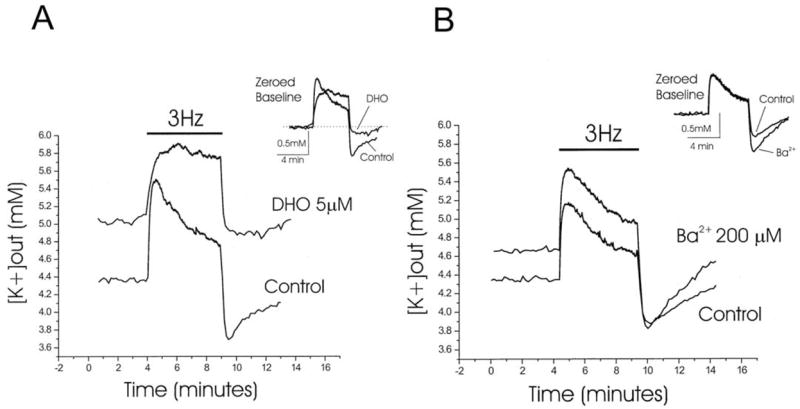Fig. 3.

Differential roles of Na,K–ATPase pumps and Kir channels for the [K+]o regulation in rat hippocampus slice. (A) In control condition, 3-Hz antidromic stimulation induces a rise of [K+]o in area CA3 that peaks at approximately 5.5 mM followed by a decline to approximately 4.7 mM. With addition of the sodium pump inhibitor di-hydro-ouabain (DHO), the baseline [K+]o increases to approximately 5.1 mM. Antidromic stimulation (3-Hz) induces a rise of [K+]o to approximately 5.9 mM but there is no [K+]o recovery phase. Also absent is the undershoot of [K+]o following the stimulation period. In the inset the two traces are shown superimposed, and the baseline is zeroed. (B) In control condition, 3-Hz antidromic stimulation induced a rise of [K+]o that peaked at approximately 5.2 mM followed by an undershoot in [K+]o. With Ba2+ (200 μM) in the bath, baseline [K+]o increased in relation to control levels and the undershoot in [K+]o following antidromic stimulation is more pronounced. In the inset the two traces are shown superimposed, and the baseline is zeroed. [From D’Ambrosio (2002), with permission.]
